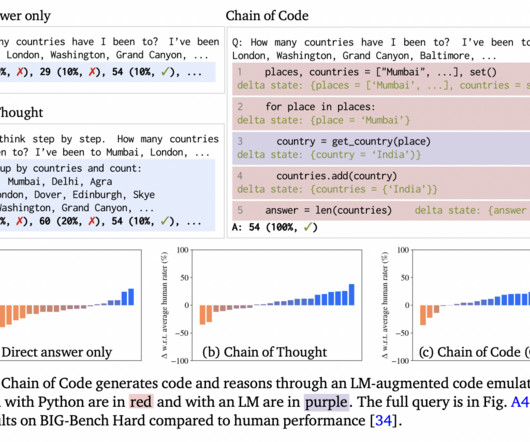Google DeepMind Researchers Propose Chain of Code (CoC): A Simple Yet Surprisingly Effective Extension that Improves Language Model (LM) Code-Driven Reasoning
Marktechpost
DECEMBER 11, 2023
CoC scales well with large and small models and broadens the scope of reasoning questions LMs can correctly answer by thinking in code. To solve a given problem, CoC generates reasoning substeps in the code structure. A core contribution of CoC is not just the generation of reasoning code but how it is executed.













Let's personalize your content